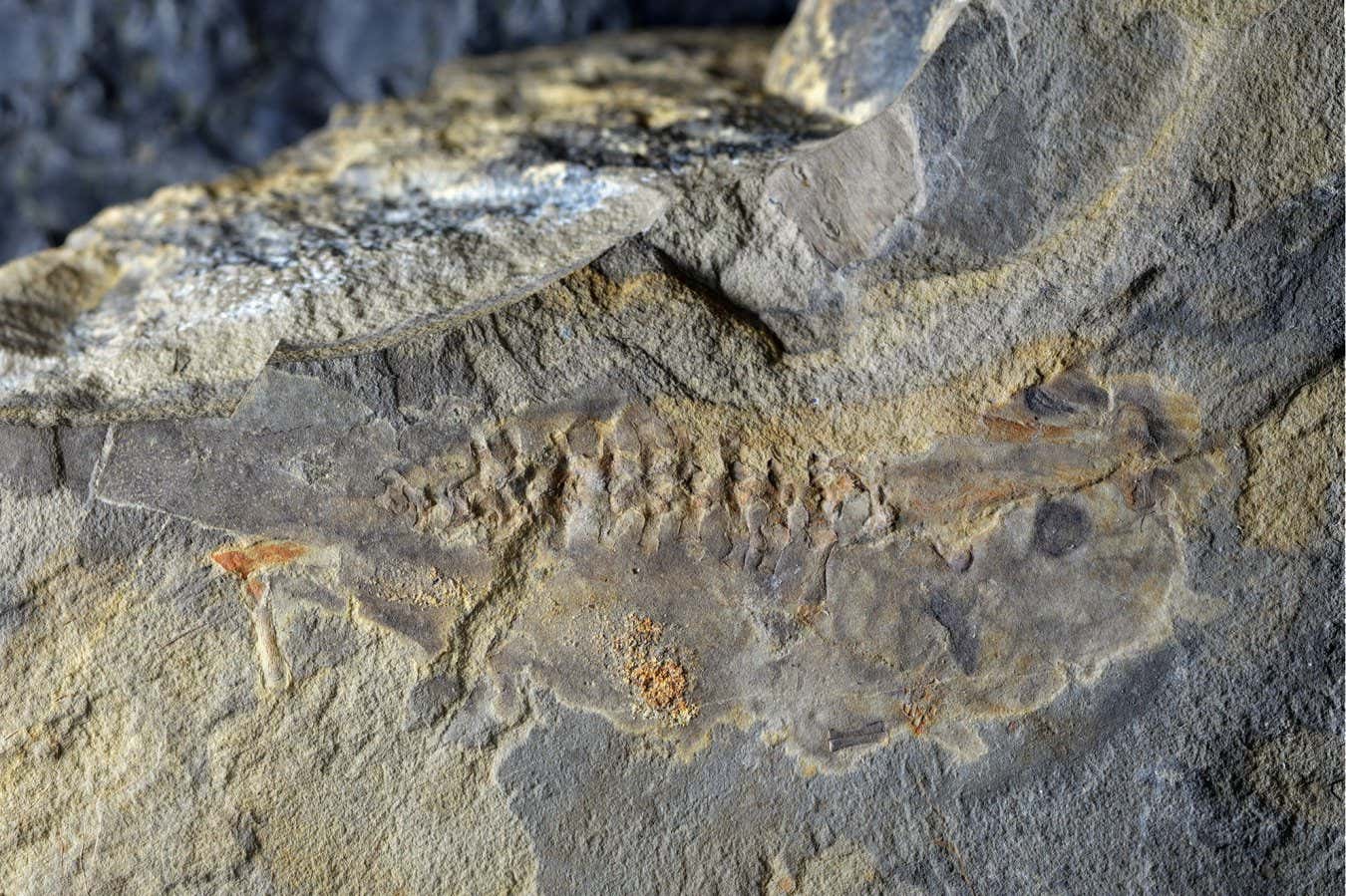
Scientists found the fossil in Santa Cruz province, Argentina
Mariana Chuliver et al., Journal (2024)
An exquisitely preserved fossilised tadpole is the oldest ever discovered by science, dating back 161 million years, with an anatomy that is strikingly similar to some of today’s species.
Palaeontologists found the fossil in January 2020 while searching for feathered dinosaurs in Santa Cruz province in Argentina.
“They did not achieve their goal,” says Mariana Chuliver at Maimonides University in Buenos Aires, Argentina. “However, after many days of digging, one team member found a stone with a particular imprint on it – a fossil tadpole.”
Chuliver and her colleagues have now identified the tadpole as belonging to the extinct frog species Notobatrachus degiustoi, deciphered from the hundreds of adult specimens found in the same fossil deposit since 1957.
Until now, scientists had never unearthed tadpole fossils from before the Cretaceous Period, which began around 145 million years ago. This specimen is also the first ever fossilised tadpole from an earlier frog lineage known as stem anurans, which predates modern species, known as crown anurans.
The fossil was so well preserved that eyes and nerves are visible in its head, as well as a forelimb and part of its tail. The team estimates it would have been around 16 centimetres long, comparable to the biggest tadpoles that exist today.
The part of the skeleton that supports the gills indicates that the specialised, filter-feeding anatomy in modern tadpoles had already evolved in this fossilised tadpole, says Chuliver.
The similarities between the ancient and modern tadpoles is so great that the team was even able to identify the fossil’s stage of development, concluding that it was just about to undergo metamorphosis into a frog.
Illustration of tadpoles and adults of the species Notobatrachus degiustoi
Gabriel Lío
Earth’s climate used to be warmer and wetter, which probably made it easier for tadpoles to reach a large size, combined with the fact that there was no competition or predation from other frog species or fish, says Chuliver.
Jodi Rowley at the Australian Museum in Sydney says the discovery of the oldest known tadpole “confirms how successful and stable the ‘typical’ frog life cycle is – the one we all learn about at school”.
The tadpole’s size also paints a picture of the kinds of habitat that frogs evolved in more than 160 million years ago – lots of water with few predators or competitors, she says. “Something modern frog species can only dream about.”
Topics:
